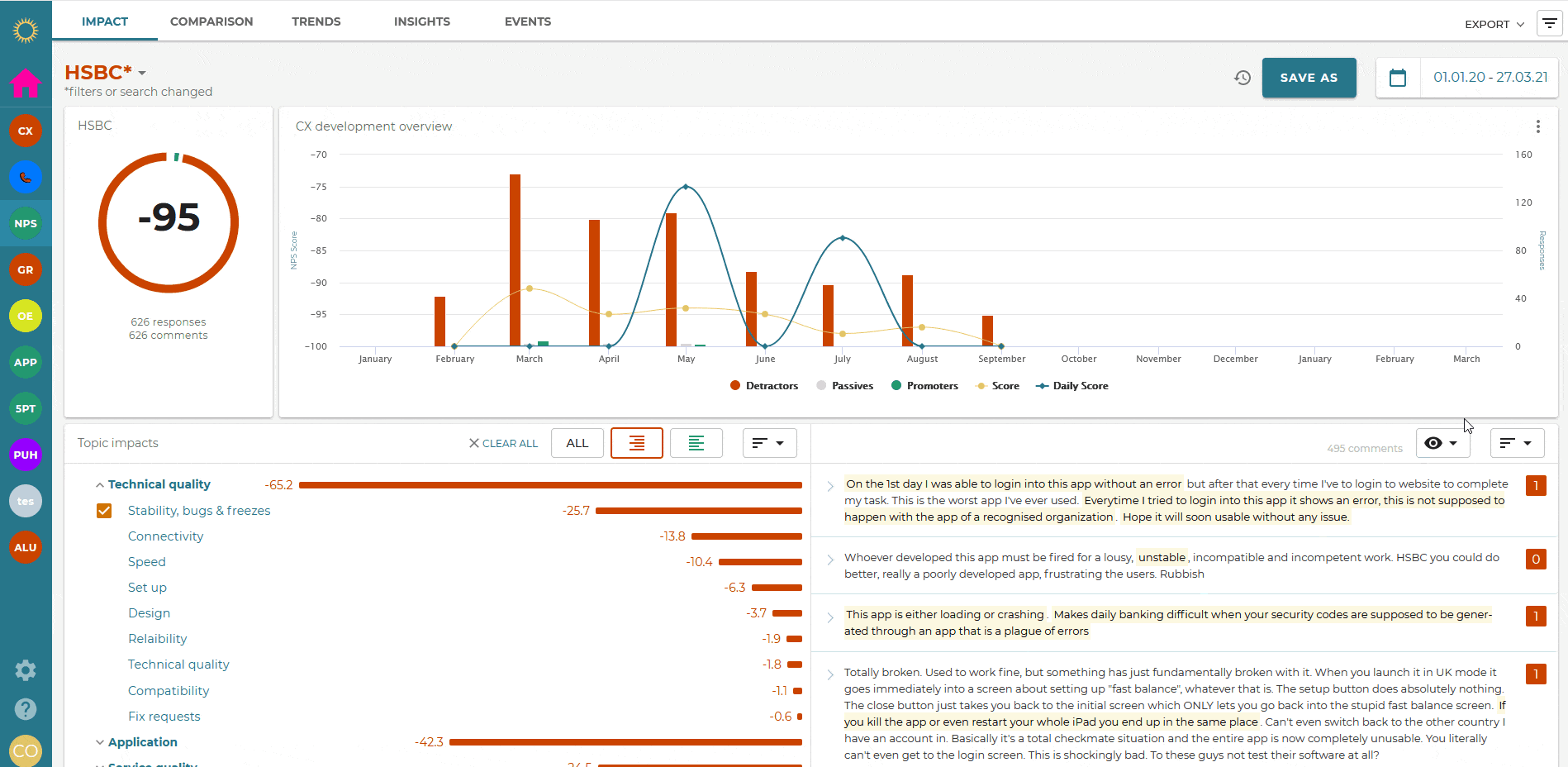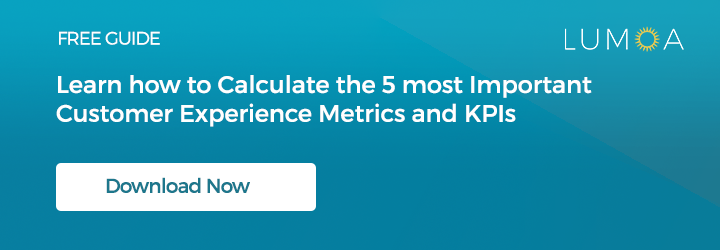What is Qualitative Data and Why You Should Collect it

Last updated on September 24, 2024
Collecting qualitative data is necessary when improving customer experience, and customer service, or when you want to maximize sales, and business growth. While numbers and ratings from research are easy to analyze, businesses require insightful qualitative data to have a complete picture of their customers.
What is Qualitative Data?
Qualitative data is data that describes qualities, patterns, and characteristics, usually in the form of descriptive words.
Unlike quantitative data, which generally gives you numerical values that you can see at face value—qualitative data is a narrative. It allows you to create implications and recognize patterns based on in-depth responses to questions.
Businesses need data to back up their decisions. From sales and marketing to customer experience, your business must collect feedback to recognize patterns and understand where you need to make improvements.
Qualitative data gives you a more complete picture of customer behavior. It shows you the perspective of the customer and the reasons for their decisions. If you can find out why your customers consistently behave the way they do, you can understand how to provide better service for them.
Examples of Qualitative Data
To get qualitative data, you must conduct some form of meaningful qualitative research, such as collecting feedback with surveys where your customers have the option to freely express their thoughts.
Researchers say, “Qualitative research can help researchers to assess the thoughts and feelings of research participants, which can enable the development of an understanding of the meaning that people ascribe to their experiences.”
That means that if you collect qualitative data it will provide insight into the feelings and meaning behind the behavior of your customers.
Examples of qualitative data include:
- Responses to interview questions
- Written responses from customer questionnaires/surveys
- Notes from focus groups
These methods’ responses are written descriptions, narratives, and short answers that will tell you more about your customers.
What is the Difference Between Qualitative Data and Quantitative Data?
Both qualitative and quantitative data have pros and cons that will determine which one is best to use in a specific case to gather the information you need.
Quantitative data
Quantitative data is usually in the form of a numerical value.
When customers fill out a survey with a rating scale or ask your customers to answer a poll, both of these research methods will give you a numerical value or a percentage.
This information is easy to graph, and you can use this information to predict customer behavior.
Quantitative data is excellent for computing numerical information. It provides concrete evidence to test a hypothesis and prove specified conditions.
Quantitative data lacks the ability for your respondents to elaborate on their answers. With numbers, you can’t tell why you’re seeing the behavior and decisions on the respondent’s part.
Qualitative data
Qualitative data are narrative responses that tell you why customers do what they do.
It will tell you how customers feel so that you can understand their behavior and why they behave that way. Qualitative data gives you the customer’s point of view and allows you to identify strengths and weaknesses.
Qualitative data provides a direct customer perspective with narrative answers, so you can understand how customers feel. It allows you to understand the customer’s perspective to develop customer empathy.
Collecting qualitative data can take time. Since it does take time, it is usually more difficult to gather from a larger sample size. Also, since you make the conclusions from the qualitative research, there is more room for error when trying to understand customer behavior, due to the subjective nature of the data.
Why collect Qualitative Data
Qualitative data is useful when you want to track particular behaviors. The key to getting value from your qualitative data is using it to identify patterns, repeat responses, and commonalities between customers.
By collecting qualitative data, you understand things like customer empathy, customer loyalty, and customer engagement. Responses to questionnaires or short interviews will tell you how the customers feel about your brand, why your customers stay with you, and overall, why they enjoy your products or services.
You use qualitative data when you want to analyze your customers’ behavior or if you need insight into the motivations and feelings your customers have behind their decisions. Qualitative data is also useful when you want feedback about your performance. Your clients can give you direct reports about how business is going from their side.
You can also use qualitative data to understand how customers are emotionally connected to your brand. You can use it to determine why they give you brand loyalty and how your brand stands compared to the competition.
These are all forms of qualitative data that you can gather through a few research methods.
How to Collect Qualitative Data
The most common ways to collect qualitative data are through:
- Observations
- Interviews
- Surveys & Questionnaires
Observation
Observations are when you observe a particular behavior and identify factors that affect that behavior. You might observe a customer call where a customer is troubleshooting a problem with one of your employees. You can take note of customer responses and behavior. Notice how your employees tend to service different issues. This qualitative data will help you understand how to keep up the quality of customer service that you provide.
Interviews
Interviews are another way of collecting qualitative data. The most important part of the interview is asking the right questions to get the answers that address the behavior in question. You want to ask a question that guides the customer to giving you an informative answer. Take notes on what customers say and keep in mind similar responses from different customers.
Surveys & Questionnaires
Finally, there are surveys and questionnaires. Surveys help you ask a series of questions and get insightful answers quickly. If you’re taking a qualitative approach with surveys and questionnaires, make sure that the questions are open-ended questions that require the customers to explain or describe. Refrain from using multiple-choice answers designed to get a numerical value in your results.
Questionnaires and surveys typically allow the respondents some space to type their answers in a few sentences. You can think of surveys and questionnaires as a way of asking the same interview questions to a larger sample size. It’s a great way to collect qualitative data at scale.
Observations, interviews, and questionnaires will give you responses that are elaborate and that provide perspective. Take note of the patterns you notice in responses and use qualitative data and quantitative data to show customers that you value their business and want to serve them better.
Have a mixed approach – collect both types of data
While qualitative data plays the role of showing you the emotions, motivations, and points of view of your customer, it’s crucial to also collect quantitative data when conducting research in a mixed methods approach. Experts define mixed methods as utilizing both quantitative and qualitative methods of research to get more complete results.
Your quantitative research will essentially tell you what your customers are doing and tell you how satisfied your customers might be. Your qualitative data will tell you why your customers are doing what they do and how they feel about it.
Using this mixed methods approach allows you to make better marketing, sales, and customer service decisions in the future. Ultimately, both methods inform your customer empathy and help you bring more value to your clients.
With NPS you collect both qualitative and quantitative data
For example, you send an NPS survey to your customers where they can motivate their answers. The written answer in this case would be qualified as qualitative data, and the number they picked would be equal to quantitative data.
Collecting qualitative data is a great way to gain insight into why customers like certain products, your strengths, and weaknesses, which products need improvement, and ultimately how to make good decisions for better service in the future.
Analyzing customer feedback that contains qualitative data
Analyzing qualitative data can be challenging and time-consuming. Qualitative data is almost always unstructured, which makes the analysis hard since there are no clear patterns or ways to group your data.
However, nowadays there are tools like Lumoa that allow you to analyze customer feedback automatically for you.

Lumoa Customer Experience Analytics will automatically find the most important insights and key drivers from your qualitative data, which means that you don’t have to manually analyze and search for insight patterns in your data.
You can find out more about Lumoa here.

